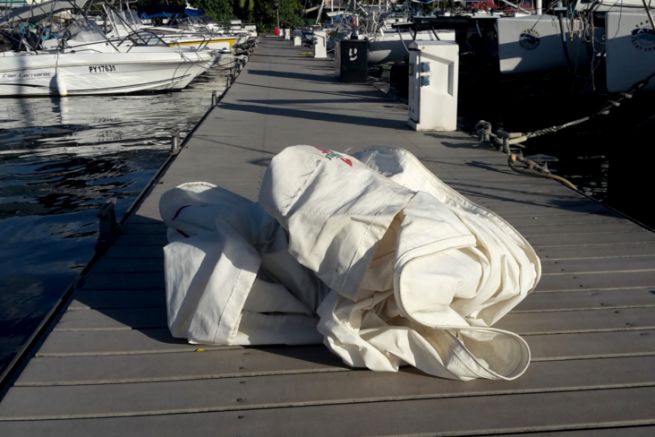Sailing does not stop once the boat has reached its destination. The sails still need to be stored to protect them and used easily next time. Here's how to fold a headsail: the genoa or the jib. " Be careful, if it is a simple operation to carry out, it is nevertheless essential to install the sails without difficulty during the next exit ", underlines Hervé Bride, sailing instructor at the Yacht Club of Tahiti.
It is quite possible to fold the sail on the deck of the boat, but this operation is easier on the flat surface of the dock or pontoon. With two, folding will be easier.
1 - Identify the listening point and tack
First of all, it is necessary to identify the bottom of the sail, i. e. the clew point and the tack point (the point attached to the fixed point of the boat).

2 - Extend the bottom of the sail
This part must then be placed flat on the pontoon or bridge. We thus have a clear view of the listening point on one side and the tack on the other.
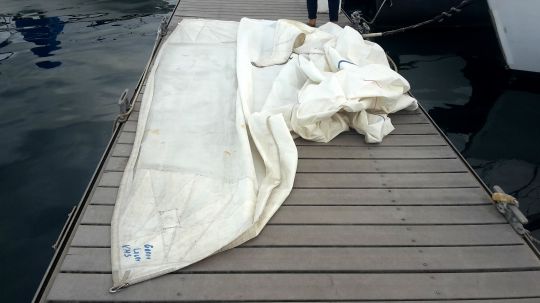
3 - Accordion folds
The sail folds in an accordion in the direction of its height. It is simply necessary to bring the sail back to the tack and sheeting points by forming strips of about 50 cm in general (You can take the storage bag from the sail and remove a good fifteen centimetres at its height to determine the size of the strips to be made.)

The folds must be even and the sail well unfurled. The sail being in the shape of a triangle, the luff and the fall (the two sides of the sail opposite its base) will gradually move towards the inside of the sail and form a zigzag
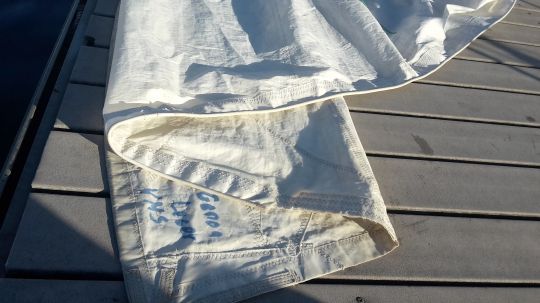
4 - Bending in the width direction, but attention?!
Once fully zigzagged, the sail must be furled in a widthwise direction.
This is the moment that requires the most attention: it is necessary identify the tack of the clew point correctly . The sail begins to be furled from the clew point.
Once the sail is folded, the tack deck should be exposed. This will allow the next time it is installed, it will be immediately fixed without having to be unfolded on the deck of the boat. 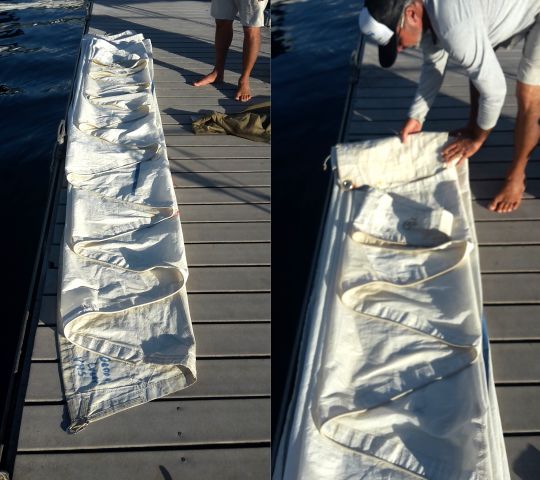
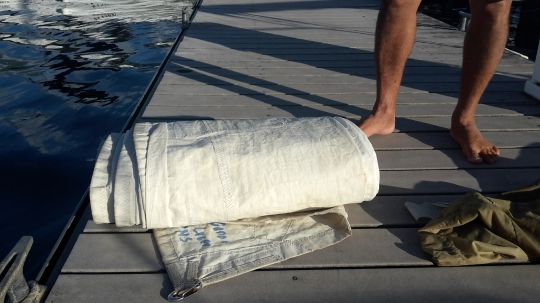
5 - And so on in the housse?!
The sail then slips into its storage bag. There you go! There you go!

Variant: a more advanced solution for folding the front sails
"I there is a variant ", adds Hervé Bride, " a more sophisticated folding that makes it even easier to rig the sail. "
The first 2 steps are identical. The sail must be extended in the same way and always folded to its height.
But this time, instead of making folds by referring only to the bottom of the sail, the luff must be folded on itself: the luff no longer forms a zigzag, but a straight line. (The luff is the side formed by the tack and halyard point).
For this purpose, the first fold or folds will not form rectangular strips.
The sail will be hoisted very easily, the luff only having to move vertically.

